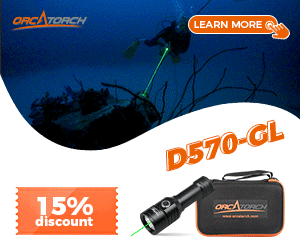If 'ya fill 'em with silicone that'll prevent freezes quite reliably. Its also extremely dangerous if you have high FO2 mixes in that tank. If the HP piston ring leaks on you, which just happens to be the highest-wear O-ring in the entire regulator, it is entirely possible to get an instant fireball. Its PROBABLY ok with FO2s up to 40% (but you can't quote me on that) but on a deco bottle its damn dangerous. If you're going to do that on a deco bottle please use the $25 worth of Christolube instead!
I don't believe in the AF crap, and I hate the mess that filling the environmental chamber makes when I go to tear it down the next time, ESPECIALLY since I O2-clean EVERYTHING and ANY trace of Silicone left in there is unacceptable.
I have several of the environmental trim rings here, but you won't find one on any of my regs - indeed, I tore off the rubber trim rings on ALL my SP firsts (including the "regular" ones), because they (1) trap salt water, which means corrosion, and (2) impede free and full flow of water through the balance chamber. To freeze you must have water that SITS long enough to freeze AND low temperatures - the better the flow rate through the holes, the harder it is to make the reg freeze. The only one I leave on is the one on the adjuster/end-cap end of the Mk20/25s and the plastic bezel where the yoke or DIN adapter screws in - the other two come off immediately.
I'd rather leave the composite piston and "AF bushing" garbage out and fill the chamber with Christolube, and I bet it'd work well too - and be totally non-approved
BTW lowering the IP doesn't help much. All it does is lower the maximum flow rate of the reg, which is high enough on the SP piston firsts to hose you anyway, even cranked down to 125. For the older Mk10s, BTW, there are THREE seats in a rebuild kit - a judicious selection of the one to use will result in a lower IP, and if you get "cute" you can actually use at least two of the three seats in one kit by changing the shims and seat you install. For the DIY guy this means you get two rebuilds out of one kit, since O-rings are easily sourced. Finally, the Mk10+ and Mk20/25 appear to use the same seat - I can't verify they actually ARE the same, but they sure as heck LOOK identical
I really LIKE the older Mk10s. They don't recover quite as fast as the 10+/20/25, but I can't tell the difference when breathing off any of the four which is on the other end.
BTW for my "test", if anyone wants to take me up on it, there won't be no wimpy tank on the other end. It'll be a HP120 with a nice, full, cold fill - right to 3442 psi. I consider it cheating to use a LP tank, as that limits the adiabatic cooling available.....
I don't believe in the AF crap, and I hate the mess that filling the environmental chamber makes when I go to tear it down the next time, ESPECIALLY since I O2-clean EVERYTHING and ANY trace of Silicone left in there is unacceptable.
I have several of the environmental trim rings here, but you won't find one on any of my regs - indeed, I tore off the rubber trim rings on ALL my SP firsts (including the "regular" ones), because they (1) trap salt water, which means corrosion, and (2) impede free and full flow of water through the balance chamber. To freeze you must have water that SITS long enough to freeze AND low temperatures - the better the flow rate through the holes, the harder it is to make the reg freeze. The only one I leave on is the one on the adjuster/end-cap end of the Mk20/25s and the plastic bezel where the yoke or DIN adapter screws in - the other two come off immediately.
I'd rather leave the composite piston and "AF bushing" garbage out and fill the chamber with Christolube, and I bet it'd work well too - and be totally non-approved
BTW lowering the IP doesn't help much. All it does is lower the maximum flow rate of the reg, which is high enough on the SP piston firsts to hose you anyway, even cranked down to 125. For the older Mk10s, BTW, there are THREE seats in a rebuild kit - a judicious selection of the one to use will result in a lower IP, and if you get "cute" you can actually use at least two of the three seats in one kit by changing the shims and seat you install. For the DIY guy this means you get two rebuilds out of one kit, since O-rings are easily sourced. Finally, the Mk10+ and Mk20/25 appear to use the same seat - I can't verify they actually ARE the same, but they sure as heck LOOK identical
I really LIKE the older Mk10s. They don't recover quite as fast as the 10+/20/25, but I can't tell the difference when breathing off any of the four which is on the other end.
BTW for my "test", if anyone wants to take me up on it, there won't be no wimpy tank on the other end. It'll be a HP120 with a nice, full, cold fill - right to 3442 psi. I consider it cheating to use a LP tank, as that limits the adiabatic cooling available.....



